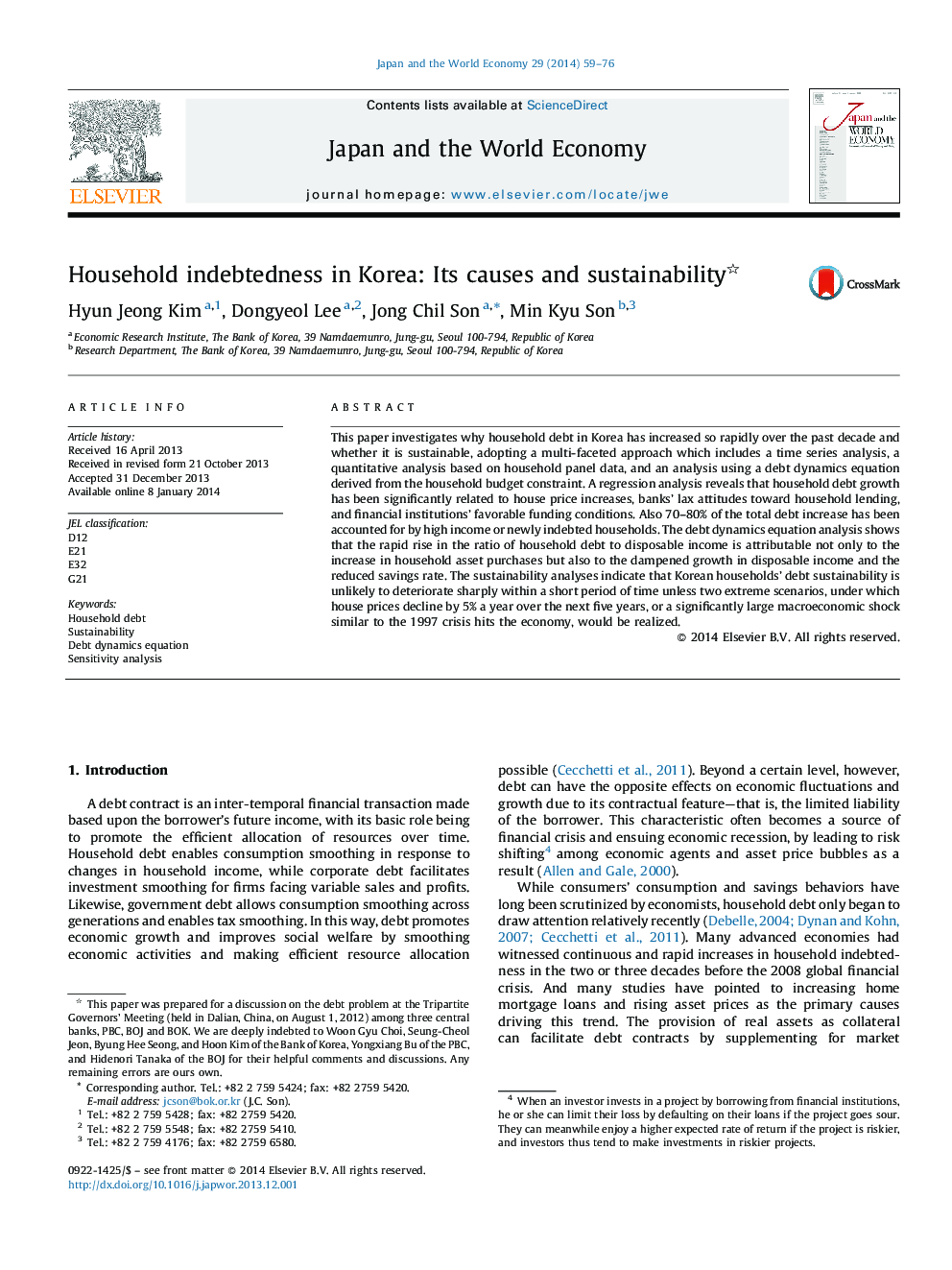| Article ID | Journal | Published Year | Pages | File Type |
|---|---|---|---|---|
| 5086157 | Japan and the World Economy | 2014 | 18 Pages |
Abstract
This paper investigates why household debt in Korea has increased so rapidly over the past decade and whether it is sustainable, adopting a multi-faceted approach which includes a time series analysis, a quantitative analysis based on household panel data, and an analysis using a debt dynamics equation derived from the household budget constraint. A regression analysis reveals that household debt growth has been significantly related to house price increases, banks' lax attitudes toward household lending, and financial institutions' favorable funding conditions. Also 70-80% of the total debt increase has been accounted for by high income or newly indebted households. The debt dynamics equation analysis shows that the rapid rise in the ratio of household debt to disposable income is attributable not only to the increase in household asset purchases but also to the dampened growth in disposable income and the reduced savings rate. The sustainability analyses indicate that Korean households' debt sustainability is unlikely to deteriorate sharply within a short period of time unless two extreme scenarios, under which house prices decline by 5% a year over the next five years, or a significantly large macroeconomic shock similar to the 1997 crisis hits the economy, would be realized.
Related Topics
Social Sciences and Humanities
Economics, Econometrics and Finance
Economics and Econometrics
Authors
Hyun Jeong Kim, Dongyeol Lee, Jong Chil Son, Min Kyu Son,
